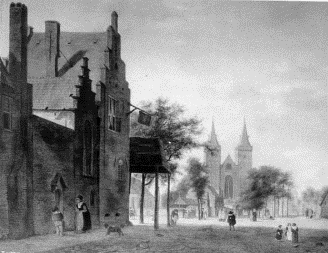Bavarian Parliament Will Investigate Claims Looted Art Was Returned to Nazis
The latest findings prompt government investigation.
The facade of the Alte Pinakothek art museum in Munich, one of the Bavarian state galleries
Following a shocking report last month proving that paintings stolen from Holocaust victims were returned to Nazis and their families after World War II, the Bavarian Parliament’s art committee, Kunstausschuss, unanimously agreed that the state government must publish a report on works of art, with the assistance of the state paintings collections (Staatsgemäldesammlungen).
The findings were released by the Commission for Looted Art in Europe (CLAE). Among other information exposed, in some cases, artworks were sold at far lowered prices to the families of Nazi officials rather than being restituted to families of victims. In other instances, the state of Bavaria simply kept the artworks. State-owned museums in Munich profited in particular from art looted by the Nazis at least until the 1990s, the study shows.
Related: Report Reveals Germany Returned Nazi-Looted Artworks to Nazi Families Instead of Victims
CLAE co-chair Anne Webber said in a statement: “We welcome the swift action taken by the Bavarian Parliament and the seriousness of their response. We look forward to a speedy, transparent, and comprehensive investigation of these transactions and the way they have been concealed.”
Webber specified, however, that “The investigation must include clarification of the provenance of the artworks so that the rightful owners of any works that were looted can be identified and assured of restitution or compensatory justice.”
Webber further said that the Bavarian government “must also ensure that all documents from the State Paintings Collection and other relevant government bodies are published and made fully accessible.”
Related: Art Experts Blast Bavarian Museums’ Attempt to Rebut Nazi Loot Claims
CLAE also announced the immediate resolution of the restitution claim that had led to the larger probe in the first place. The CLAE investigation began after the rightful heirs of collectors Gottlieb and Mathilde Kraus, who are trying to recover some 160 artworks stolen from the Krauses, had good reason to believe two of their paintings would be in the state-owned museum in Munich.
“Records show they were handed over to Bavaria by the US in 1952 for the purpose of restitution,” the report reads. “To their shock, they found they had instead been given by the Bavarian State in the early 1960s to Henriette Hoffmann-von Schirach, daughter of Hitler’s close friend and photographer, Heinrich Hoffmann, and wife of the notorious ‘Gauleiter’ [Hitler’s district governor] of Vienna, Baldur von Schirach.”
One small painting, Jan van der Heyden’s Picture of a Dutch Square, was sold by the Bavarian State Galleries to von Schirach for 300 Deutschmark, who then auctioned it off for 16,000 Deutschmarks to the Xanten Cathedral Association; it was on display in the cathedral until 2011, the same year that CLAE submitted a restitution claim for the painting on behalf of the Kraus family.

Jan van der Heyden, (Dutch 1637-1712)
View of a Dutch square (Holländisches Platzbild). Now in the possession of the Cathedral Church Association of Xanten, Germany. Courtesy of CLAE
The chairman of the Dombauverein, responsible for the Xanten cathedral, has now issued a statement acknowledging the history of the painting and of the family, and saying they are willing to return the artwork. “We welcome the publicly stated commitment of the Dombauverein to restitute the painting”, said Anne Webber.
artnet News has reached out to the press office of the Alte Pinakothek art museum in Munich, one of the Bavarian state galleries, which was the source of an emailed four-page statement, responding point-by-point to the CLAE’s explosive report. artnet News had not heard back as of publication time.


